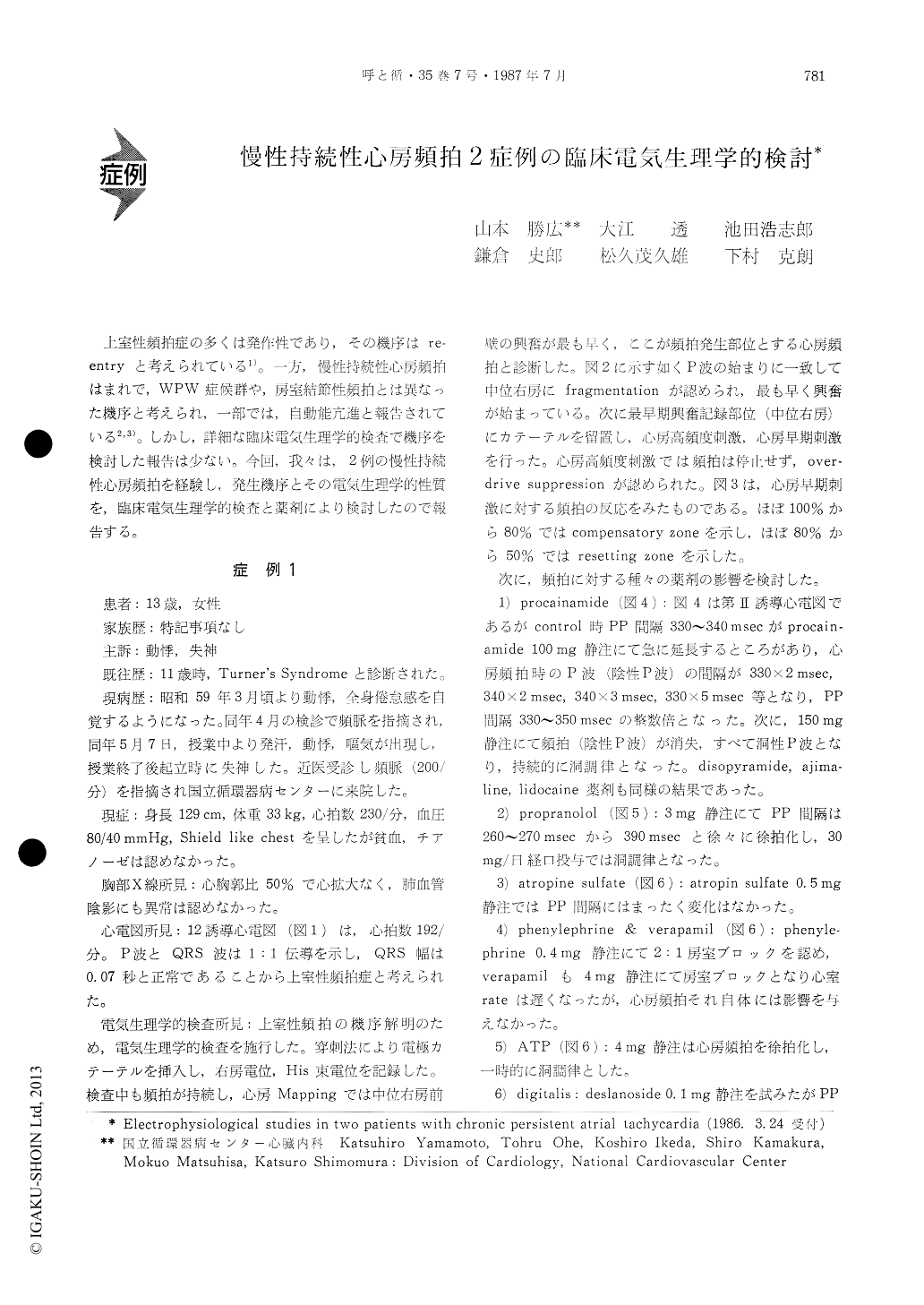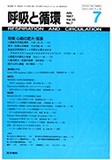Japanese
English
- 有料閲覧
- Abstract 文献概要
- 1ページ目 Look Inside
上室性頻拍症の多くは発作性であり,その機序はre—entryと考えられている1)。一方,慢性持続性心房頻拍はまれで,WPW症候群や,房室結節性頻拍とは異なった機序と考えられ,一部では,自動能亢進と報告されている2,3)。しかし,詳細な臨床電気生理学的検査で機序を検討した報告は少ない。今回,我々は,2例の慢性持続性心房頻拍を経験し,発生機序とその電気生理学的性質を,臨床電気生理学的検査と薬剤により検討したので報告する。
Electrophysiolo;ical and pharmacological studies in two patients with chronic persistent atrial tachy-cardia are reported. Endocardial mapping during atrial tachycardia showed that the site of origin was at anterior mid right atrium in one case and high right atrium in another case. Endocardial mapping during normal sinus rhythm showed fragmentation at or near the site of origin of atrial tachycardia. Electorophysiological studies showed ( 1 ) atrial sti-muli or rapid pacing were unable to terminate atrial tachycardia, (2) overdrive suppression was present.
Procainamide, disopyramide, lidocaine, abruptly slowed atrial rate by half, one third of the original rate, or established sinus rhythm. Digitalis, phenyl-ephrine, verapamil gradually slowed the ventri-cular rate, but had no effect on the atrial rate. Exercise increased the atrial rate, but atropine sulfate and vagal stimulus did not change it.
In conclusion ; (1) electrophysiological studies suggested that enhanced automaticity was responsi-ble for two patients with chronic persistent atrial tachycardia. ( 2 ) electropharmacological studies suggested that Vaughn Williams I group terminated or slowed the tachycardia by producing exit block around the ectopic atrial focus ( 3 ) autonomic nerve system plays an important role in changing atrial rate mainly by effecting sympathetic stimuli.

Copyright © 1987, Igaku-Shoin Ltd. All rights reserved.


